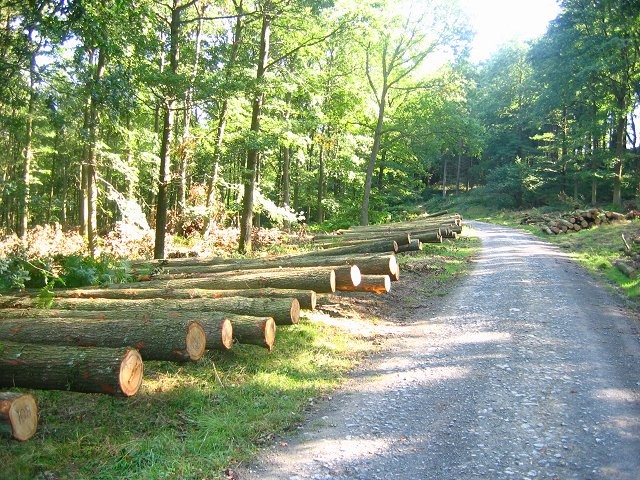For many centuries, oak has been traditionally used in shipbuilding, since it has incredibly strong wood. If the tree is tended just right, it can produce lumber with straight and true wood grain. During the Vikings era, these trees have been used in Sweden for different kinds of vessels, such as naval ships.

(Photo : Wikimedia Commons/ Richard Webb)
High Demand for Oak Timber
Oak wood is highly valued for making ships, but oaks are slow-growing trees. By the early 19th century, it had become clear that the size and demand of the military maritime fleet was outpacing forests in Sweden. This pressure only increased due to a series of wars and skirmishes from 1800-1830.
As far back as the Middle Ages, the law prescribed that the Swedish Crown had the exclusive right to make use of the oak trees in the country. Soon after the end of the disastrous Napoleonic Wars, Sweden had just lost their forests in Pomerania and Wismar to war, which happened to be their main source for oak timber.
Around 1830, the Crown sent out a delegation to look for ideal spots to secure access to good timber for ship production in the future. Three of the emissaries arrived at a small farm in Visingsö, a narrow island located in the middle of Vättern, the second largest island in Sweden. In this lake island are hundreds of acres of tall and orderly oaks, all planted with long-term purpose.
The emissaries spied three oaks just outside of a farmhouse owned by an old woman. They took one with them back to Stockholm, the capital city of Sweden, it did not take much to convince the Royal Navy that Visingsö had almost the perfect conditions suitable for their precious lumber production.
Many island forests still stand because of their relative isolation and difficulty of access can leave tracts of valuable timber intact. For more than ten years, a total of 300,000 oak trees were planted.
READ ALSO: Extinct Oak Tree Species Rediscovered, Preservation At Work in Big Bend National Park
Forgotten Forest
Aware of the slow-growing nature of the trees, the Navy thought awfully far ahead to get a supply of lumber to keep afloat well into the 20th century. Back in the 19th century, oak was made suitable for ship production by forcing them to grow up rather than spreading out. This was made possible by planting other species like silver fir, beech, maple, elm, and ash between the rows.
Many of these oak trees remain today, occupying an area of 360 hectares (900 acres). By the time the trees were fully grown 150 years later, the Navy showed no interest in using them.
In 1856, the Bessemer process for steel production was patented. By the 1880s, almost all new maritime vessels were manufactured with iron or steel hulls. By the 1910s, sailing ships had been replaced by steamships, even for cargo transport. Moving on to the second half of the 20th century, the steam turbine has met its demise as most new ships have been built with diesel engines. Meanwhile, the oaks were left growing.
Today, the forest has immensely tall and unusually straight trees, administered by Sweden's National Property Board. Although these trees have never met the ocean from the bottom of a boat, they were still used for other purposes. Technological advancements have made them ideal materials for veneers, furnishing details for boats, and floors. They were also used in various applications that require hard and compact oak material, such as whisky barrels.
RELATED ARTICLE: Why Are More Acorns Falling? Excessive Drops of Nuts from Oak Trees Is Part of Normal 'Mast Year' Phenomenon
Check out more news and information on Oak Tree in Science Times.











!['Cosmic Glitch' in Einstein's Theory of General Relativity Could Be Explained in This New Scientific Tweak [Study]](https://1721181113.rsc.cdn77.org/data/thumbs/full/53435/258/146/50/40/cosmic-glitch-in-einsteins-theory-of-general-relativity-could-be-explained-in-this-new-scientific-tweak-study.jpeg)


